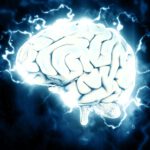Scientists have long known about the so-called “first-night effect,” which makes humans feel strangely alert the first time they sleep in a new place.
Yuka Sasaki of Brown University was intrigued by the first night effect and set up an experiment to test it out. “Even when you look at young and healthy people without chronic sleep problems, 99 percent of the time they show this first-night effect—this weird half-awake, half-asleep state,” says Sasaki.
Scientists study whether different brain regions sleep differently
Some animals, such as whales, dolphins and many birds, can sleep with only half of their brain at a time. The other half stays awake, and the corresponding eye stays open. Sasaki wondered whether humans are capable of the same thing on a lower level in order to stay alert to signs of danger in new environments.
“It was a bit of a hunch,” she says. “Maybe we’d find something interesting.”
The study involved 11 volunteers to stay in her laboratory for a few days, sleeping in a medical scanner. “The scanner has a bed that could go completely flat, and we put a lot of pillows and towels to make it comfortable,” says Sasaki. “It was a little restricted but people could still sleep.”
The scanner recorded data that showed that subjects did not fall asleep as quickly and slept less deeply on the first night. The slow-wave activity of the brain, associated with deep sleep, was weaker in the left side of their brains on the first night.
Human brains remain alert to possible signs of danger
Slow-wave asymmetry was present in areas of the brain associated with spontaneous unfocused mental activity, known as the default mode network. This suggests that the first-night brain is indeed a kind of night watchman.
Sasaki then asked subjects to sleep in a normal bed wearing a pair of headphones, through which she played a series of beeps into either the left or right ear, either steadily or infrequently. The left hemisphere, not the right, was found to be more responsive to infrequent beeps, but not steady ones, on the first night, not the second.
The results show that sleep in humans is dynamic and affected by the environment, just as it is in animals. Lino Nobili from Niguarda Hospital in Milan says that the results support a “relatively new view of sleep” which regards it as a patchwork process that affects some parts of the brain more than others. This also explains sleepwalking and other strange sleep behavior.
Scientific community split over study
However other scientists have criticized the small number of subjects used in the study and the methods it used. The team should have also taken into account the handedness of the subjects, as well as their gender, which could have contributed to asymmetric brain activity.
Vladyslav Vyazovskiy from the University of Oxford says that Sasaki should specify if the rooms had asymmetric sources of light or sound, and whether subjects slept on a specific side of their body. “Was the asymmetry related to the environment or sleep posture in any way?” he said.
Sasaki does not believe that these factors are important. The use of earbuds means that sounds came within the ear rather than outside, and “the asymmetry only occurs on the first night,” she says, while other factors like handedness and gender remain constant.
The small sample size is a real weakness, however, and further research is needed.











